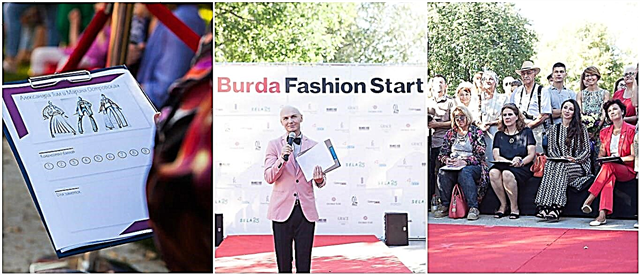Share
Pin
Tweet
Send
Share
Send
Today, more and more people, and not only the elderly, complain of joint pain. Why are these diseases getting younger from year to year?
Joint pain can accompany more than a hundred different diseases. In this case, the process in the joint itself develops according to a similar scenario: the occurrence of pain - limitation of mobility - deformation of the joint - violation of its function. Why does a mechanism ideally designed by nature begin to "prematurely" rust, ignoring the natural margin of safety? And how to reduce the risk of developing early articular syndrome?
REASONABLE LOADS
It is known that joints do not like prolonged mechanical overload, not to mention injuries. The cause of pain can be dislocations, fractures, torn ligaments, chronic microtrauma. The latter contribute to the development of damage to the joint, provoke "cracking" and thinning of the cartilage, lead to tears of the joint capsule and micro-fractures of bone beams. All this serves as the basis for the occurrence of joint diseases. Moreover, not only professional athletes suffer, but also ordinary amateurs who intensively train in the gym, on a treadmill or court.
Tip: forget about overloads! Physical activity should be commensurate with the capabilities of the body. Assess them and choose the appropriate load will help a sports instructor.
NOTHING EXTRA!
Being overweight is not the main cause of joint problems, but it becomes an unbearable burden for our legs. Just imagine: when walking and running, the load on the knee and hip joints is 3-5 times greater than body weight. Healthy cartilage can withstand high blood pressure, but if, in addition to extra pounds, there are other unfavorable factors (congenital weakness of the ligamentous apparatus, abnormalities of bone tissue, previous injuries, metabolic disorders in the body, circulatory problems, etc.), joint function is impaired even in young people.
Tip: reduce weight under the supervision of a nutritionist and do not chase fast results. Do exercises at the same time to strengthen the ligament apparatus of the joints.
LEARNING THE PEDIGREE
Joint diseases have a hereditary predisposition. The genetic line conveys the characteristics of metabolism, the structure of cartilage and skeleton. This does not mean at all that if your mother or grandmother suffered from arthrosis, you will certainly encounter this ailment, but there is a risk. It increases if a person has congenital anomalies of the joints, as well as malfunctions in the immune system.
Tip: if you are at risk, be especially careful about your joints. Note also that often the triggering mechanism for the development of the disease is increased insolation, so protect yourself from the sun.
SPARE NERVES
The combination of chronic stress with the adverse circumstances that we talked about above can lead to the appearance of articular syndrome.With prolonged experiences, irritation, depression, the adrenal glands secrete an increased amount of stress hormones, which adversely affect the metabolic processes in the joints. According to scientists, the most “psycho-dependent” were the knee and hip joints.
Tip: joint pain often occurs in emotionally tired people. So take off the stress on time! Swimming, yoga, sessions of psychotherapy, travel, your favorite hobby will come to your aid.
BLOOD TEST
The cause of the joint syndrome is often infectious diseases. Today, the problem of tuberculosis and rheumatism has again become urgent, and sexually transmitted infections (gonorrhea, chlamydia, etc.) are especially common among young people. In addition, the joints also suffer from viral infections.
Tip: with the appearance of pain in the joints, first of all, it is necessary to exclude the infectious nature of the disease using a blood test (the list of necessary indicators will be determined by the doctor).
WELL, PLEASE!
The peculiarity of the cartilage tissue is that there are no blood vessels in it, so the nutrients in the cartilage come from intraarticular fluid. The main building blocks of cartilage are proteoglycans, in particular glucosamine and hyaluronic acid. Violation of their metabolism inevitably leads to a change in the structure of the cartilage, its destruction and, as a result, the loss of joint function. With age, the lack of glucosamine and hyaluronic acid is explained by the natural process of aging.But today, such metabolic disorders are diagnosed much earlier. One possible reason is the lack of proteoglycans in food. And all because soups of meat on the bone have practically disappeared from our diet.
Tip: at least 1-2 times a month include in the menu aspic, aspic, hash. These gelatinous dishes are a natural source of proteoglycans.
SALT DEPOSITS
Salt, which we eat, has nothing to do with it! "Deposition of salts" is usually called the condition when crystals of uric acid or calcium pyrophosphate are found in the joints. They cause inflammation of the surrounding tissues, damage to the cartilage and worsen the properties of the joint fluid. As a rule, this occurs with an increase in uric acid in the blood, which happens not only with gout, but can also be a secondary metabolic disorder in diabetes, obesity, cardiovascular and other diseases.
Tip: if the level of uric acid in the blood is elevated, it is recommended to limit meat, offal, meat and mushroom broths, canned fish, smoked meats, chocolate, cocoa, as well as coffee and alcoholic beverages in your diet.
Gymnastics for joints
• Walk on your toes, then on your heels.
• Take turns on the outer and inner edges of the feet.
• Stand on the edge of a thick book so that your fingers hang down - try to get the floor.
• Grab a pencil with your toes and try to write something. What matters is not the result, but the process itself.
• Roll the tennis ball in your foot - back and forth, left and right.Try to grab the ball with your toes and raise it.
Text: Elena Shvedova. Photo: PR
Material prepared by Julia Dekanova
Share
Pin
Tweet
Send
Share
Send



